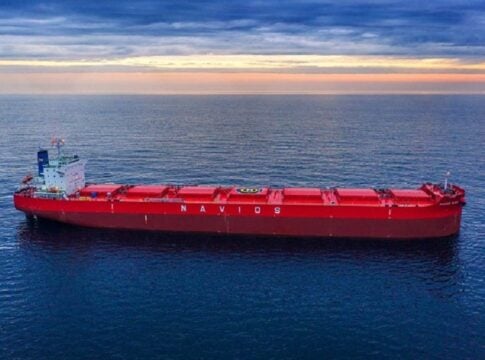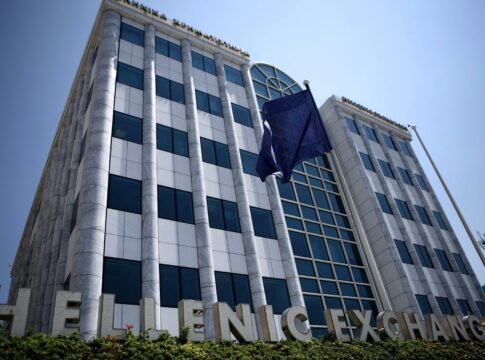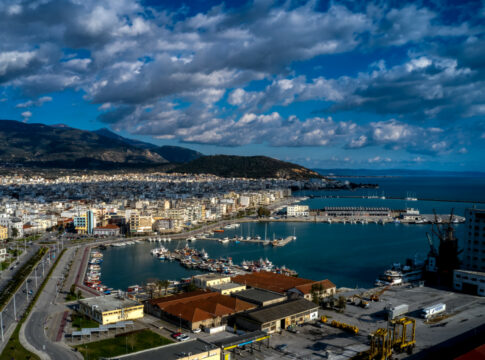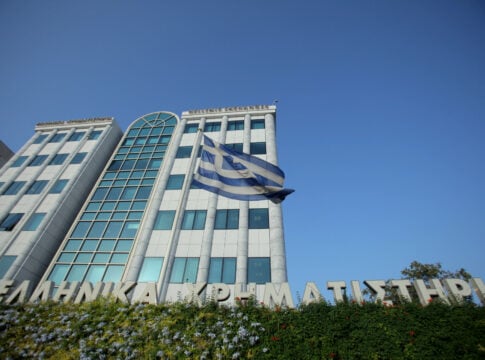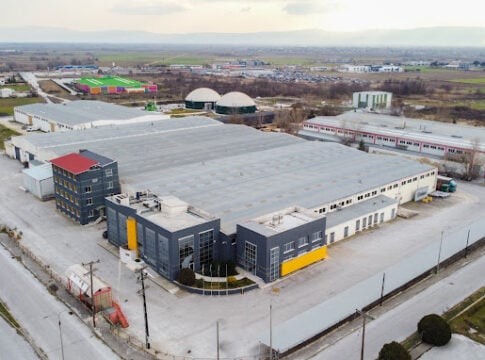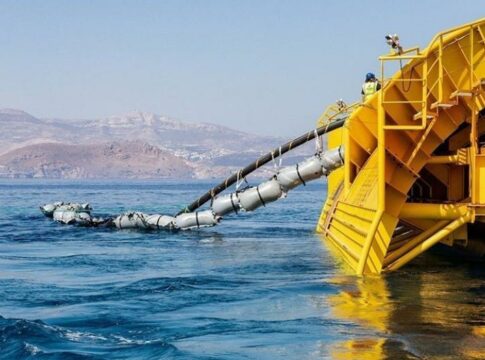Bud Darr, President of the Cruise Lines International Association (CLIA), outlined Greece’s future in the global cruise market in an interview with “N”, recognizing the impressive rise of our country as a regional hub in the Eastern Mediterranean.
With 8 million passenger movements and almost 5,500 cruise ship arrivals in 2024, Greece is emerging as a strategic destination, with an expected market growth of over 10% in 2025, he pointed out.
Darr emphasized that Greece has the potential to diversify its tourism footprint by promoting lesser-known ports and areas.
“With over 40 ports available for development, CLIA member companies are showing interest in expanding beyond popular destinations, such as Mykonos and Santorini.
This strategy can strengthen local economies, reduce pressure on infrastructure and offer passengers authentic experiences, he said.
Regarding the sustainability of the sector in Greece, the CLIA senior executive stated that strengthening port infrastructure, facilitating homeporting (starting trips from Greek ports) and lengthening the tourist season are critical conditions for sustainable development.
Cruising contributed over 2 billion euros to the Greek economy in 2023, creating more than 22,000 jobs and showcasing the importance of further supporting the sector.
Referring to the recent announcement of an increase in port fees, Darr expressed reservations about the timing and manner of implementation, especially during the tourist peak, and believes that it may cause operational difficulties and additional administrative burdens for local agents.
“Although investment in infrastructure is positive, planning must be done transparently and in collaboration with the stakeholders involved,” the head of CLIA noted, while underlining that effective cooperation between the state, ports and companies is necessary for long-term planning, sustainable development and distribution of benefits to more regions.
Regarding the industry’s investments in green technologies on the path to decarbonization, he stated that cruise companies are already investing in ships with engine and propulsion technologies, focusing on LNG, e-methanol and hydrogen.
“More than 50% of ships worldwide are already equipped with shore-side energy connectivity, and the number is growing,” he said, noting that “Greece, with the right investments and partnerships, can emerge as a leading force in the Mediterranean in the field of sustainable cruises.”
How do you see Greece on the global cruise map in the next 10 years?
“Greece is evolving into a key cruise hub in the Eastern Mediterranean, with steadily increasing demand and dynamic growth. Its geographical location, high-quality tourism product and investments in ports make it increasingly competitive on a global level.
With almost 8 million passenger movements and 5,490 cruise ship arrivals in 2024, Greece is recording impressive growth and it is estimated that the cruise market will grow by over 10% in 2025.
This momentum reflects the country’s strong position on the international map, attracting companies and visitors seeking authentic experiences.”
Is there interest from CLIA member companies in lesser-known Greek destinations, beyond the popular ones, such as Santorini and Mykonos?
“There is a clear interest in developing alternative destinations, as Greece has more than 40 ports with the potential to be included in the cruise network.”
CLIA member companies are responding to this trend and are seriously considering the inclusion of alternative Greek ports in their schedule.
This offers opportunities for smaller island and mainland communities to benefit from cruise tourism, with a positive impact on the local economy and limited pressure on infrastructure.
Cruise tourism has the advantage of spreading the benefits across multiple locations without requiring a massive and long-term stay.
“The lesser-known Greek ports, if properly supported, can accommodate flows of visitors who wish to experience authentic sides of the country, while at the same time contributing to the decongestion of popular destinations.”
What can Greece do to strengthen its position as a top destination?
“Greece can strengthen its position by investing in port infrastructure, facilitating homeporting and expanding the tourist season.
Operating Greek ports as cruise departure points not only offers enriched travel experiences, but also increased revenues for local communities, through overnight stays, supplies, refueling and technical services.
In 2023, the total contribution of cruising to the Greek economy amounted to 2 billion euros, supporting over 22,000 jobs – an increase directly linked to the rise of homeporting.
Also, with its mild climate and rich cultural heritage, the country has the potential to attract cruises during the winter months, reducing seasonality and boosting the local economy in a more uniform manner.
With combined itineraries connecting Europe, Asia and Africa, and with growing demand for authentic travel all year round, the country can further invest in strengthening infrastructure, diversifying destinations and interregional cooperation, in order to develop into a cruise hub of international scope.
New cruise ship fee expected to impact industry in several ways. What is your assessment of the recent announcement of an increase in port fees in Greece? Is there a possibility that the increases will lead to a change in itineraries to other countries?
“The introduction of the new cruise ship fee is expected to impact the cruise industry in several ways, both operationally and commercially.
While the Greek government’s intention to channel additional resources into port infrastructure and destination development is a positive goal, it is reasonable to have concerns about the timing and manner of implementation of the measure.
The planned implementation during the peak tourist season presents serious practical challenges, especially since the cruise itineraries for this period have been finalized well in advance.
Furthermore, the administrative burden associated with the new tax – particularly the responsibility for managing advances – will fall largely on local shipping agents.
This shift in responsibility raises questions about their ability to effectively respond to such requirements within existing frameworks, potentially complicating the overall implementation of the new fee.
As for whether the increases will lead to changes in routes to other countries, this remains a corporate choice.”
How can ports, governments and cruise lines work together better?
“The cruise industry operates on the basis of long-term planning and collaboration, which is why CLIA, together with its member cruise lines, actively works with both government and port authorities and local communities to support sustainable development.
Unlike other forms of tourism, cruising benefits from early itineraries, which allow destinations and companies to collaborate early on.
This makes it possible to proactively address potential challenges and ensure that tourism development is aligned with local priorities.
To facilitate constructive collaboration, CLIA has established relevant guiding principles, focusing on transparency, timely communication and shared responsibility for implementing workable and well-thought-out policies.
It is essential that any new measures are not only clearly defined and consistently implemented, but also adapted to the real needs of both cruise lines and local communities.
Local conditions vary considerably from destination to destination. For some, accommodation and affordability may be a top priority. For others, it may be access to ports, congestion or infrastructure constraints.
These differences highlight the need for a flexible, local approach rather than a one-size-fits-all solution.
Integrated tourism strategies that balance environmental, social and economic challenges are usually the most effective.
These include promoting less visited ports, investing in port infrastructure and implementing sustainability practices across the tourism value chain.
Berth allocation systems have proven to be a useful tool in busy ports, helping to distribute cruise ship arrivals in ways that minimize disruption while supporting local businesses.
In addition, CLIA supports the conduct of research and environmental assessments to help inform decisions and thus mitigate potential impacts.
Our participation in EU and Mediterranean sustainability initiatives reflects our broader commitment to working together for evidence-based planning.
It is also important to expand the geographical reach of cruise tourism. In 2024, more than half of all cruise activity in Greece was concentrated in just three ports: Piraeus, Santorini and Mykonos.
However, the country has more than 40 destinations ready to welcome cruise ships. The diversity of destination options not only reduces pressure on high-demand areas, but also promotes a model with a more equitable distribution of economic benefits for communities on both islands and the mainland.”
What are the most promising alternative fuel technologies currently being considered by the global cruise industry?
“The cruise industry is considering a range of alternative fuel technologies, focused on the long-term transition to zero- or low-emission fuels.
Cruise lines have already invested in ships with engine and propulsion technologies that support sustainable fuel sources, enhancing their flexibility to transition to lower-carbon energy in the future.
In the spotlight are methanol and hydrogen, for which ships with suitable propulsion technologies are already being built.
LNG is also a transitional option, thanks to its ability to support future bio- or synthetic fuels.
Combined with the use of sustainable biofuels by 2030 and the widespread implementation of onshore power supply (OPS), companies are formulating a multi-dimensional decarbonization plan, while calling on governments and suppliers to support this transition.
Currently, over 50% of cruise ships worldwide are equipped with onshore energy support, and this number is increasing year by year.”




